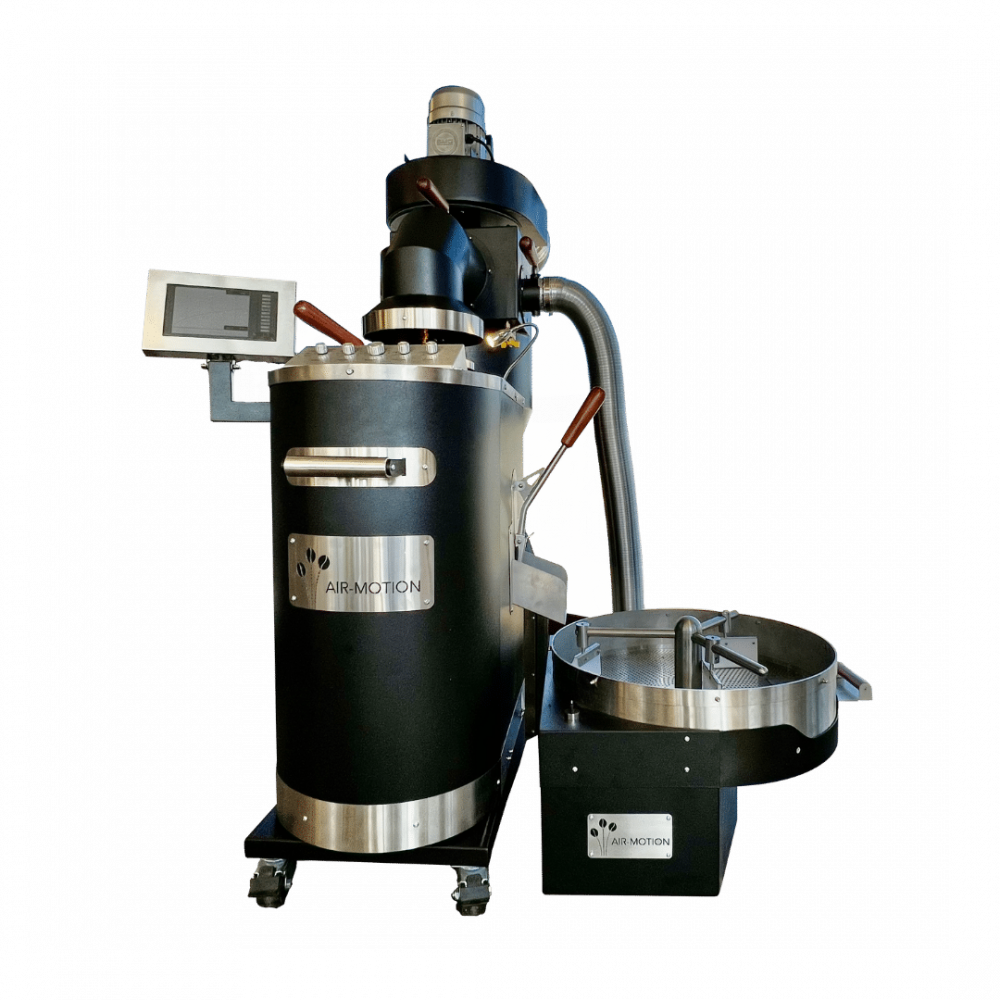Any experienced roaster knows that the real art of coffee is in the conversion, rather than the bean itself. But are you really extracting every bit of potential out of your existing thermal design? For years, the industry accepted certain trade-offs between volume and clarity. Now, technology challenges that premise.
This blog offers a high-level review of the essential decision points you must weigh before committing to a hot air coffee roaster commercial system, ensuring your next investment is a deliberate step toward operational excellence and a cleaner cup profile.
The Machine as a Thermal Conductor
When you take an air roaster under consideration, you are not just buying a device; you are buying a tool for exact convective control. The genius of air roasting lies in its capability to envelop each bean with warmth, removing the conductive transfer and uneven surface heat that may result in burning.
● Demanding Thermal Responsiveness
The paramount feature to assess is the system’s ability to react now. Does the machine’s programming allow for infinitesimal adjustments to temperature and airflow during the roast cycle?
You need responsiveness that can translate complex roast profiles into repeatable production batches. The hot air coffee roaster commercial unit, well-engineered, will give you the level of granular control you need to emphasize the origin flavors of a light African coffee as readily as it will craft the rich, multifaceted notes required for an espresso roast. Precision is the foundation of consistency, after all.
● Working with Emissions and Compliance
In modern operations, the conversation quickly moves from the roasting chamber to the stack. Several professionals ask for the functional distinction between a fluid bed coffee roaster vs afterburner roaster system.
To make things clearer, the nomenclature is different: fluid bed defines the process of bean suspension and roasting, whereas the afterburner designates the component required that burns smoke, chaff, and volatile organic compounds (VOCs).
If your production volume or location requires air quality control to the letter, you cannot afford to let these two be disconnected. The hot air coffee roaster commercial unit’s efficiency and thermal operation must be complemented by an equally efficient, frequently integrated, afterburner system to ensure long-term compliance and safe operation.
The Metrics of Commercial Endurance
The most elegant technology is useless without commensurate commercial performance. Your roaster’s contribution is measured in throughput, stability, and minimized overhead.
● Efficiency: Beyond Batch Time
It’s tempting to focus solely on the 12-to-15-minute batch time often associated with high-end air roasters (which, remember, depends entirely on your specific bean and desired profile).
However… the real efficiency metric is the entire cycle. How quickly does the rapid cooling system engage and stop the roast? Does the hot air coffee roaster commercial system offer automated chaff collection that minimizes required labor between batches?
These seemingly small factors collectively compound, allowing you to maximize daily output and reduce employee time spent on non-production activities.
● Durability and Maintenance Design
If complex dismantling is required just to clean the chamber, your operational risk profile increases. The best hot air coffee roaster commercial investments are those that protect your uptime by making routine servicing quick and straightforward.
Redefining the Flavor Profile
The industry has moved well past the simplistic notion of an all-air roaster vs a drum roaster flavor difference. Modern technology renders that debate moot.
● The Full Spectrum of Development
Historically, air roasting was typecast as only suitable for light, bright, and clean profiles. Thanks to advancements in heat application and air management, a sophisticated hot air coffee roaster commercial machine can now deliver an incredibly wide spectrum of roast profiles.
These machines permit you to control both conductive and convective heat transfer at the same time. With this ability, you are able to fully develop the interior of the bean without the outside having a taste of being baked or burned, enabling you to create deep, rich, complex flavor while maintaining outstanding flavor clarity.
A Strategy for Sustainability and Safety
The future of coffee farming is inexorably tied to cleaner, more responsible methods.
● The Electric Advantage
Everyone knows that sustainability is no longer a marketing option; it’s an environmental and financial imperative. Several state-of-the-art hot air coffee roaster commercial systems are electric nowadays.
Removing the gas aspect lowers one of your sets of maintenance and infrastructure expenditures while at the same time lowering your environmental impact.
In addition, electric systems tend to offer higher safety standards and more stable energy release, making them perfect for contemporary, high-volume production plants.
● Calculating the Value Proposition
When you review the capital outlay, remember you are buying into a lower operational expenditure model. Fewer inconsistencies mean less wasted product. Higher efficiency means lower utility and labor costs per pound.
This strategic investment in a hot air coffee roaster commercial system delivers its strongest return through product consistency and operational simplification, allowing your team to focus their energy on sourcing and profile development, where the true value is created.
The Last Line
Have you begun to model the long-term cost savings that an inherently cleaner, faster hot air coffee roaster commercial solution will bring to your entire production chain?
By selecting equipment built for precision and endurance, you are ensuring your roast quality remains both impeccable and scalable for years to come.
